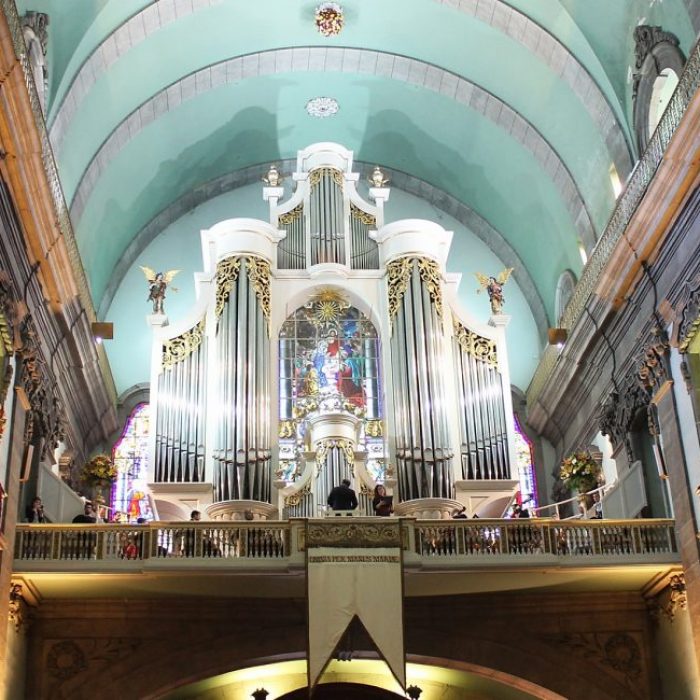Church
In 1754, the founder of the Venerable Brotherhood of Our Lady of Lapa, Father Ângelo Sequeira, was invited by Porto’s governor of arms, Diogo de Sousa, to visit the city. During his visit he decided to build a chapel in honor of Our Lady of Lapa. This chapel was built in 1755, in a deserted place in “Padrão Velho, at the bottom of the Mount of Santo Ovídio”. A year later, on July 17th, due to the large number of believers in the community, the first stone of the new church was laid and the construction was dragged on until 1863. Its first project was commissioned to João Glama Ströberle, however a new design was ordered to José de Figueiredo Seixas, the architect who directed the works until 1773, the year of his death.
On May 1st, 1779, when the construction of the body of the church ended, the rite of dedication took place. It is since then that the Brotherhood of Lapa celebrates the feast of the patron Saint, on the first Sunday of May.
With the church already built, the gaze now turned to its interior, where the works made by different artists and artisans can still be seen today. The neoclassical altarpiece by the illustrious Porto carver Manuel Moreira da Silva and the tribune painting by Joaquim Rafael, also the miniature nativity scene from the Machado de Castro School and the simulacrum of the relics of Saint Victoria.
Inside, you can still see the mausoleum where, since 1837, the heart of King Peter IV rests. A monument made of “the finest granite that could be extracted from the city’s quarries”, conceived and designed by Joaquim da Costa Lima Junior only for this purpose.
Of a more recent past, we can find the House of the Brotherhood and the Portraits Gallery. Designed by the main Porto architect José Marques da Silva (1869-1947), this building, adjacent to the church, also housed, until 2008, the Lapa Seminar-School.


A Museum Church
The Lapa Church houses an image of Our Lady of Lapa, made in poly chrome wood, ordered by the founder Father Ângelo de Sequeira, between 1753 and 1754.
The church also presents stained glass windows, at the entrance, on ground level, designed by Mauméjean, in Paris, 1927. On the upper choir level there are 3 stained glass elements, framing the pipe organ, and they were made by Ricardo Leone, 1931. On the main chapel’s tribune, there is the panel representing the theme of the adoration of the shepherds, of large proportions (12×5.70m), constituting the largest panel in the city of Porto.
On the outside facade there are 4 female statues, larger than human size, representing four important women from the Old Testament: Rachel, Judith, Esther and Sarah.







Concerts
Characteristics:
The Organ has a total of 4307 tubes:
– Great Organ: 1 337 tubes
– Positive: 928 tubes
– Expressive: 1 306 tubes
– Trumpets: 232 tubes
– Pedal: 504 tubes
– Carillon: 42 bells
The largest tube is made out of wood and is 10.12 meters tall. The largest tube on the facade is 8.13 m tall and has 255 mm in diameter. The smallest tube is made out of metal, 9 mm tall and 2.9 mm in diameter. The organ weighs about 34 tons and is placed on an iron structure. It is 14.18 m tall, 10.20 m wide and 5.10 m deep.


Localização | Location
Contactos | Contacts
Geral/General: 225 502 828
Igreja/Church: 222 001 369
Cemitério/Cemetery: 223 289 317
(Chamada rede fixa nacional)
